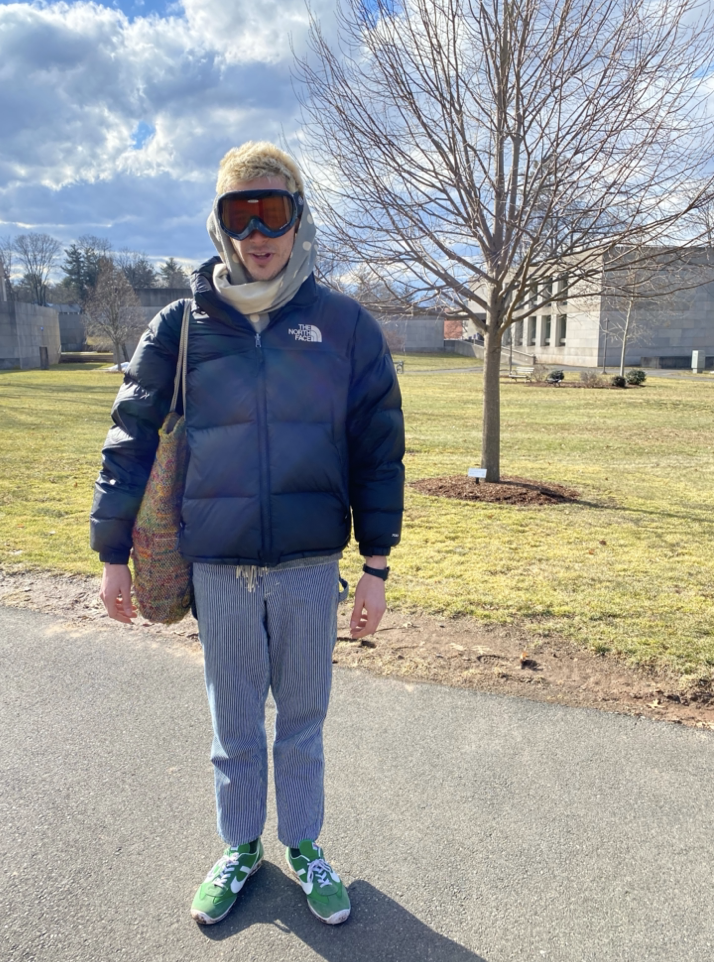
c/o Anne Kiely
When asked for an interview, Joseph Cohen ’22 suggested going for a walk to show The Argus around the tunnels below the Center for the Arts (CFA). Cohen spoke about finding space to concentrate, teaching sensory experience through a student forum called “Going Virtual: California in Ontological Crisis,” listening to the layers of sound, and a self-made studio in the tunnels.
The Argus: What was your student forum about?
Joseph Cohen: It was [about] the internet [and] the idea that you can be in a place without actually being there physically. I was thinking about the trap of Zoom and where you are [located] when you’re in a place like the internet. We [also] spent some time looking at air and other in-betweens, and trying to listen to silence in the CFA tunnels.
A: Is it actually silent down in the tunnels?
JC: No, there’s all of these wild noises [like] all the water in the CFA, going back and forth. There’s pipes that say hot and cold. [The tunnels] start to sound like a computer from a couple of decades ago. I did a project down there last spring where I asked people to take off their shoes and walk in the dark and listen to a soundtrack that I [had] made based on all the noises in the tunnels.
A: What was the purpose?
JC: I got really interested in all the dust that collected there. I kept trying to figure out what the purpose of the tunnels [was]—there wasn’t really any—but I started spending time down there, and at six or seven in the morning, the facilities team would [come] down there. When you turn off the lights and you shine a flashlight on a specific area, you start to see footprints on the ground that are left by people that [work there].
I [also] get excited that time doesn’t really pass in the same way. There are some parts of the tunnels where there’s no [cell] service.
I’m a studio art and English major, and I wanted a studio as a junior, which is hard to get, so I made one for myself down here, which I thought would cause issues. But there’s only so many people that are tracking through here, so I made a little corner for myself [and] I started to get to know some of the Facilities team.
I was working right here (points down a small hallway). It’s terrifying in some ways, but, also, I could concentrate.
A: How did you first start coming to the tunnels?
JC: I was trying to cast parts of my body with plaster—I want to show you this room behind you (opens the door to a boiler room).
There’s a well in there. If you listen closely, you can hear the water. You can see what I was describing earlier—chilled water and then hot water coming from there. I feel like people should come here on their tours of Wesleyan.
I find it really hard to track where we are. I know right now we’re near [Ring Hall], and if you go out that way, [there’s an] exit.
This is where I unplugged all the lights for a couple hours and amplified the sounds that you’re hearing now and then played them for people on speakers that I brought down here. What you think would be silence is all these little clickings. I spent a few months kind of being obsessed with silence as something that wasn’t actually silent and listening really deeply to get a sense of this space. I’ve gotten a lot out of this place. (We walk out of the CFA tunnels by Crowell Hall).
A: You mentioned having a studio space. What kind of art do you do?
JC: I find myself coming back to painting a lot. I also just like to talk to people. It’s kind of the dream. [The tunnels are] like a monastery. A professor once told me that she felt like a monk here.
A: You also mentioned English. Is literature something that’s important to you?
JC: Yeah, it is, in some ways. Maybe not actually reading, but the act of speaking is important. Or the sound of what something reads like. I took a class my sophomore year on sound.
A: What did you do in the class?
JC: We talked about Frank Ocean a lot. [Instead of] books, we often listened to songs. (Siren sounds in the distance). We talked about textures of sounds, like this siren we’re hearing. It’s stacked within a place, in the same way that we see this tree being in front of these bricks. A layering of different noises.
A: What was your process like, deciding what to study?
JC: It’s funny to start [my] last semester here because I’ve been looking through old journals from high school, and it all makes sense. I was doing the same stuff when I was eight that I’m doing now, but maybe just amplified.
In high school, I remember taking an honors English class, where I was told that if you want to be in this class, you’re probably going to study English in college, and here we are. (We walk over to a concrete half-circular staircase in the CFA that works as a whispering gallery).
A: If you could give any advice to your freshman self, what would it be?
JC: Calm down. This place is really great, and a really strange opportunity to get, and I wish [I hadn’t always thought] about [not taking] a class that looks silly because it [would] be a waste of time. There’s [a] lot of time [here], but no time here also.
This interview has been edited for length and clarity.
Anne Kiely can be reached at afkiely@wesleyan.edu.